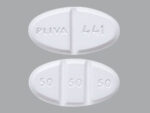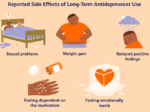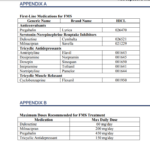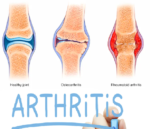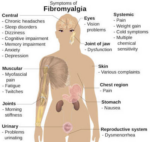Antidepressants are medicines that treat depression. Your doctor can prescribe them for you. They work to balance some of the natural chemicals in our brains. It may take several weeks for them to help. There are several types of antidepressants. You and your doctor may have to try a few before finding what works best for you.
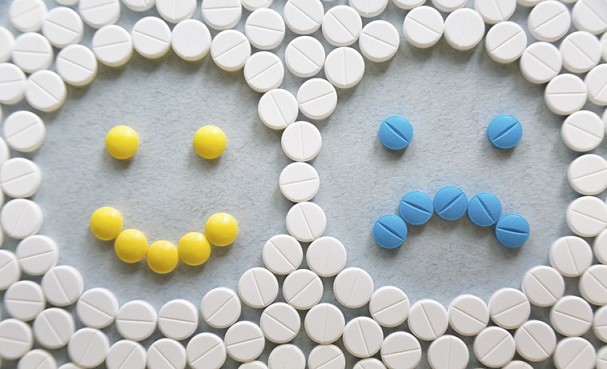
Antidepressants may cause mild side effects that usually do not last long. These may include headache, nausea, sleep problems, restlessness, and sexual problems. Tell your doctor if you have any side effects. You should also let your doctor know if you take any other medicines, vitamins, or herbal supplements.
It is important to keep taking your medicines, even if you feel better. Do not stop taking your medicines without talking to your doctor. You often need to stop antidepressants gradually.
- Amitriptyline (Elavil)
- Bupropion (Wellbutrin)
- Desipramine (Norpramin)
- Duloxetine (Cymbalta)
- Imipramine (Tofranil)
- Venlafaxine (Effexor)
Table 2 – List of antidepressants and their categorizations
| Category | Drug Class | Generic names |
|---|---|---|
| Second-generation | Selective Serotonin Re-uptake inhibitors(SSRIs) | Fluoxetine, Fluvoxamine, Paroxetine, Sertraline, Citalopram, Escitalopram |
| Second-generation | Selective Norephinephrine Re-uptake inhibitors | Venlafaxine, Mirtazapine, Duloxetine |
| Second-generation | 5-HT2 receptor antagonists | Nefazodone |
| Second-generation | Dopamine re-uptake inhibitors | Bupropion |
| First-generation | Tricyclic antidepressants (TCAs) | Amitriptyline, Clomipramine, Desipramine, Doxepin, Imipramine, Nortriptyline, Amoxapine, Protriptyline, Trimipramine |
| First-generation | Monoamine oxidase inhibitors (MAOIs) | Tranylcypromine, Phenelzine, Selegiline, Isocarboxazid |
List of antidepressants
This is a complete list of clinically approved prescription antidepressants throughout the world, as well as clinically approved prescription drugs used to augment antidepressants, by pharmacological and/or structural classification. Chemical/generic names are listed first, with brand names in parentheses. All drugs listed are approved specifically for major depressive disorder unless noted otherwise.
Selective serotonin reuptake inhibitors (SSRIs)
- Citalopram (Celexa, Cipramil)
- Escitalopram (Lexapro, Cipralex)
- Fluoxetine (Prozac, Sarafem)
- Fluvoxamine (Luvox, Faverin)
- Paroxetine (Paxil, Seroxat)
- Sertraline (Zoloft, Lustral)
Serotonin–norepinephrine reuptake inhibitors (SNRIs)
- Desvenlafaxine (Pristiq)
- Duloxetine (Cymbalta)
- Levomilnacipran (Fetzima)
- Milnacipran (Ixel, Savella)
- Venlafaxine (Effexor)
Serotonin modulator and stimulators (SMSs)
- Vilazodone (Viibryd)
- Vortioxetine (Trintellix)
Serotonin antagonist and reuptake inhibitors (SARIs)
- Nefazodone (Dutonin, Nefadar, Serzone) – withdrawn/discontinued in most countries
- Trazodone (Desyrel)
Norepinephrine reuptake inhibitors (NRIs)
- Atomoxetine (Strattera) – an NRI approved to treat ADHD
- Reboxetine (Edronax)
- Teniloxazine (Lucelan, Metatone) – also a 5-HT2A receptor antagonist
- Viloxazine (Vivalan)
Although marketed as an antidepressant, a meta-analysis found that reboxetine was ineffective and potentially harmful.
Norepinephrine–dopamine reuptake inhibitors (NDRIs)
- Bupropion (Wellbutrin) – weak NDRI, although its dopaminergic actions are controversial; may act as a norepinephrine–dopamine releasing agent (NDRA) alternatively or additionally; also a non-competitive antagonist of nicotinic acetylcholine receptors
Tricyclic antidepressants (TCAs)
- Amitriptyline (Elavil, Endep)
- Amitriptylinoxide (Amioxid, Ambivalon, Equilibrin)
- Clomipramine (Anafranil)
- Desipramine (Norpramin, Pertofrane)
- Dibenzepin (Noveril, Victoril)
- Dimetacrine (Istonil)
- Dosulepin (Prothiaden)
- Doxepin (Adapin, Sinequan)
- Imipramine (Tofranil)
- Lofepramine (Lomont, Gamanil)
- Melitracen (Dixeran, Melixeran, Trausabun)
- Nitroxazepine (Sintamil)
- Nortriptyline (Pamelor, Aventyl)
- Noxiptiline (Agedal, Elronon, Nogedal)
- Opipramol (Insidon)
- Pipofezine (Azafen/Azaphen)
- Protriptyline (Vivactil)
- Trimipramine (Surmontil)
Tetracyclic antidepressants (TeCAs)
- Amoxapine (Asendin)
- Maprotiline (Ludiomil)
- Mianserin (Tolvon)
- Mirtazapine (Remeron)
- Setiptiline (Tecipul)
Mianserin, mirtazapine, and setiptiline are also sometimes described as noradrenergic and specific serotonergic antidepressants (NaSSAs).
Monoamine oxidase inhibitors (MAOIs)
Irreversible
Non-selective
- Isocarboxazid (Marplan)
- Phenelzine (Nardil)
- Tranylcypromine (Parnate)
Selective for MAO-B
- Selegiline (Eldepryl, Zelapar, Emsam)
Reversible
Non-selective
Caroxazone (Surodil, Timostenil) was formerly used as an antidepressant, but has been discontinued.
Selective for MAO-A
- Metralindole (Inkazan)
- Moclobemide (Aurorix, Manerix)
- Pirlindole (Pirazidol)
- Toloxatone (Humoryl)
These drugs are sometimes described as reversible inhibitors of MAO-A (RIMAs).
Eprobemide (Befol) and minaprine (Brantur, Cantor) were also formerly used as antidepressants, but have been discontinued.
Mixed
Non-selective
- Bifemelane (Alnert, Celeport) – RIMA, irreversible inhibitor of MAO-B, and weak NRI
Others
Marketed
- Agomelatine (Valdoxan) – 5-HT2C receptor antagonist and MT1 and MT2 receptor agonist
- Esketamine (Spravato) – non-competitive NMDA receptor antagonist
- Ketamine (Ketalar) – non-competitive NMDA receptor antagonist – not specifically approved for depression (used off-label)
- Tandospirone (Sediel) – 5-HT1A receptor partial agonist
- Tianeptine (Stablon, Coaxil) – weak and atypical μ-opioid receptor agonist
Discontinued/withdrawn
- α-Methyltryptamine [αMT] (Indopan) – non-selective serotonin receptor agonist, serotonin–norepinephrine–dopamine releasing agent (SNDRA), and weak RIMA
- Etryptamine [α-Ethyltryptamine (αET)] (Monase) – non-selective serotonin receptor agonist, SNDRA, and weak RIMA
- Indeloxazine (Elen, Noin) – serotonin releasing agent (SRA), NRI, and NMDA receptor antagonist
- Medifoxamine (Clédial, Gerdaxyl) – weak serotonin–dopamine reuptake inhibitor (SDRI) and 5-HT2A and 5-HT2C receptor antagonist
- Oxaflozane (Conflictan) – 5-HT1A, 5-HT2A, and 5-HT2C receptor agonist
- Pivagabine (Tonerg) – unknown/unclear mechanism of action
Over-the-counter
The following antidepressants are available both with a prescription and over-the-counter:
- Ademetionine [S-Adenosyl-L-methionine (SAMe)] (Heptral, Transmetil, Samyl) – cofactor in monoamine neurotransmitter biosynthesis
- Hypericum perforatum [St. John’s Wort (SJW)] (Jarsin, Kira, Movina) – TRPC6 activator, and various other actions
- Oxitriptan [5-Hydroxytryptophan (5-HTP)] (Cincofarm, Levothym, Triptum) – precursor in serotonin biosynthesis
- Rubidium chloride [RbCl] (Rubinorm) – unknown/unclear mechanism of action
- Tryptophan (Tryptan, Optimax, Aminomine) – precursor in serotonin biosynthesis
- Magnesium
- Acetylcarnitine
- Saffron
Adjunctive treatments
Atypical antipsychotics
- Amisulpride (Solian) – specifically approved, in low doses, as a monotherapy for dysthymia
- Aripiprazole (Abilify) – specifically approved as an adjunct for major depressive disorder
- Brexpiprazole (Rexulti) – specifically approved as an adjunct for major depressive disorder
- Lurasidone (Latuda) – specifically approved for depressive episodes in bipolar disorder
- Olanzapine (Zyprexa) – specifically approved as an adjunct for major depressive disorder
- Quetiapine (Seroquel) – approved as an adjunct for both major depressive disorder and depressive episodes in bipolar disorder
- Risperidone (Risperdal) – not specifically approved as an adjunct for major depressive disorder (used off-label)
Others
- Buspirone (Buspar) – 5-HT1A receptor partial agonist – not specifically approved for depression (used off-label)
- Lithium (Eskalith, Lithobid) – mood stabilizer (mechanism of action unknown/unclear) – not specifically approved for depression (used off-label)
- Modafinil – marketed as an eugeroic or wakefulness-promoting drug, a weak dopamine reuptake inhibitor with other pharmacodynamic effects of relevance in improving depressive symptoms, used off-label[10][11][12]
- Thyroxine (T4) – thyroid hormone (thyroid hormone receptor agonist) – not specifically approved for depression (used off-label)
- Triiodothyronine (T3) – thyroid hormone (thyroid hormone receptor agonist) – not specifically approved for depression (used off-label)
- Minocycline – Microglia inhibitor (Tetracycline antibiotics) – the overall antidepressant effect size of compared to placebo was -0.78 (95% CI: -0.4 to -1.33, P=0.005) in meta-analysis.[13] – not specifically approved for depression (used off-label).
Combination products
- Amitriptyline/chlordiazepoxide – TCA and benzodiazepine (Limbitrol)
- Amitriptyline/perphenazine (Etafron) – TCA and typical antipsychotic combination
- Flupentixol/melitracen (Deanxit) – TCA and typical antipsychotic combination
- Olanzapine/fluoxetine (Symbyax) – SSRI and atypical antipsychotic combination – specifically approved as a monotherapy for depressive episodes in bipolar disorder and treatment-resistant depression
- Tranylcypromine/trifluoperazine (Parstelin, Parmodalin, Jatrosom N, Stelapar) – MAOI and typical antipsychotic combination
Pain Medications, Pain Relief, and Pain Management

